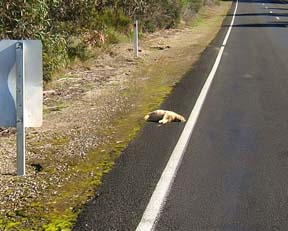I was on my way to work yesterday when I saw this dead polar bear on the side of the road.
It is tragic that melting ice forced this magnificent creature to leave its home and swim all the way across the Pacific and around the coast of Australia, only to be killed by a careless motorist.
At least, it looked like a polar bear. And I was a lot closer than this guy:
According to a recent report by Human Events, special investigators from the US government’s Interior Department (ID) have found that a scientific paper published in a 2006 issue of the journal Polar Biology is filled with baseless assumptions about four specific polar bear deaths — and this eventually became the foundational argument for the fight against global warming. But in reality, the deaths may have had nothing to do with melting ice caps, and everything to do with a simple windstorm.
It all stems from an unusual air observation of what appeared to be four dead polar bears floating in the sea. From 1,500 feet (457 meters) in the air, observers reported to study author and biologist Charles Monnett, as well as contributor Jeffrey Gleason, that dead polar bears had been observed, which the duo later used to make various statements, including that “drowning-related deaths of polar bears may increase in the future if the observed trend of regression of pack ice and/or longer open-water periods continues.”




Leave a Reply